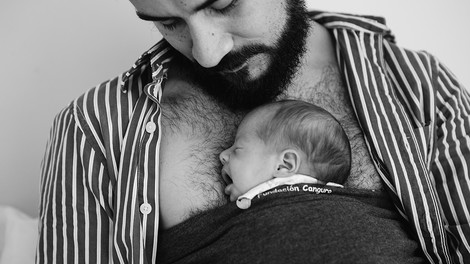Your podcast discovery platform
Curious minds select the most fascinating podcasts from around the world. Discover hand-piqd audio recommendations on your favorite topics.

piqer for: Boom and bust Health and Sanity Global finds Doing Good
Danielle Batist is an experienced freelance journalist, founder of Journopreneur and co-founder of the Constructive Journalism Project. She lived and worked all around the globe and covered global and local stories of poverty, exclusion and injustice. Increasingly, she moved beyond ‘problem-reporting’ to include stories about the solutions she found. She witnessed the birth of the new nation of South Sudan and interviewed the Dalai Lama. She reported for Al Jazeera, BBC and the Guardian and regularly advises independent media organisations on innovation and sustainability. She loves bringing stories to the world and finding the appropriate platforms to do so. The transformation of traditional media fascinates rather than scares her. While both the medium and the message are changing, she believes the need for good storytelling remains.
Kangaroo Care: Saving Babies’ Lives By Keeping Them Close
Sometimes you get introduced to an idea that sounds so simple that you wonder why it hasn’t become the norm everywhere. Kangaroo care, the topic of this 4,300 word longread on Mosaic, is one such idea.
Kangaroo Mother Care (KMC) is the brainchild of Colombian paediatrician Edgar Rey, who introduced it to the Instituto Materno Infantil in 1978. A shortage of incubators and a hunch about marsupials inspired him to try something to save premature babies’ lives: constant skin-to-skin contact with parents.
What amazed me about the piece was the notion that this idea, which seemed so natural and intuitive, was perceived to be radical. It wasn’t until the doctor studied kangaroos that he thought of applying the same idea to humans. As the piece describes:
"Rey happened upon a paper on the physiology of the kangaroo. It mentioned how at birth, kangaroos are bald and roughly the size of a peanut – very immature, just like a human pre-term baby. Once in its mother’s pouch, the kangaroo receives thermal regulation from the direct skin-to-skin contact afforded by its lack of hair. It then latches onto its mother’s nipple, where it remains until it has grown to roughly a quarter of its mother’s weight, when finally it is ready to emerge into the world."
This struck a chord with Rey. He went back to the institute and decided to test it out. He trained mothers of premature babies to breastfeed and carry them just like kangaroos. The results were remarkable: both death rates and infection levels dropped immediately.
I like Mosaic magazine for their evidence-based approach and thorough editing and fact-checking (one article tends to have five people working on it alongside the author). The piece goes deep into the academic research proving the method's life-saving success. I was encouraged to read that KMC has since successfully - and cheaply - been replicated in many low-income countries, including Malawi, Ethiopia and India.
